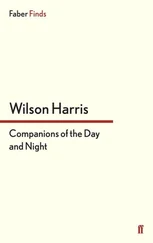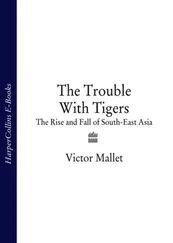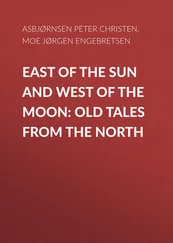The question of possible links with Hellenistic court life arises with another funerary inscription in mosaic, found in the northern cemetery of Edessa and part of the so-called Abgar mosaic (Am 10), which decorated the family tomb of a local notable, a certain Barsimya. This mosaic includes Barsimya’s portrait together with individual portraits of his grandfather, mother, brother, and son, but also, and most importantly, a prominent portrait of the king of Edessa, Abgar VIII (176–211), who occupies the central portion of the composition and is addressed as “my Lord and benefactor” in the inscription. Here, both iconography and text express the strong allegiance of Barsimya to the king, and there is a possibility that the Syriac terminology should be understood as a calque of the Greek euergetēs (Healey 2009: 243–245).
Several other inscribed mosaics from Osrhoene survive (mostly dating back to the second and third centuries CE) that similarly portray the deceased together with family members. Am 2, Am 3, and the Gadya family mosaic (Önal 2017: 132–134) represent 6, 13, and 4 individual portraits respectively; here, each person is represented individually, enclosed by a quadrangular frame, and is identified by Syriac labels. Conversely, other funerary family mosaics represent the figures standing as in a family portrait (Am 4, Am 5, Am 11, Cm 14), or, in one case, as an entire family taking part in a funerary banquet (Am 8). In this last mosaic, the deceased is depicted reclining on a couch, surrounded by his wife and members of his family; other inscribed scenes of funerary banquets survive also in stone (As 16/17, As 12, As 14; Drijvers 1977: 899 about possible links with the iconography in Palmyra). Conversely, a trace of rather more earthly banquets is represented by the fine silver jug that was found in a private house in Dura-Europos, inscribed, in Syriac, with the name of the owner and the weight of the silver (Bo 1): its decorative motifs, enriched by bunches of grapes and satyrs’ masks, indicate that the vessel was used to pour wine and likely attests to the adoption of the practice of the symposium among Syriac speakers (Baur et al. 1933: 178–181, 229–231, pl.XII). Other funerary inscriptions in stone (rather than in mosaic) include portraits of the deceased in relief, following a custom that might be compared with practices in Palmyra and Zeugma (As 6, As 26, As 40, As 43 possibly representing three women, As 50, As 60; Chapter 12); another link to burial practices in Palmyra comes from the remains of a tower-tomb south of Edessa, which is inscribed in Greek and Syriac and perhaps belonged to a member of the Edessene royal family (As 62; Healey 2017: 8–9).
In addition to being used in funerary settings, Old Syriac had an important royal status within the kingdom of Edessa, as can be gauged from its use on coins (see below) and from official dedicatory inscriptions. Not unlike Palmyra and Hatra, Edessa was rich in monuments and sculptures that celebrated the royal family and members of the local elites; an important trace of dedicatory statuary survives in the form of a column that still stands on Edessa’s citadel. As its inscription makes clear, the column once held a statue of the Edessene queen (or princess) Shalmat, daughter of the crown prince Ma‘nu, and was set up in the first half of the third century CE by a high-ranking official in the kingdom (As 1). The inscription also attests to the use, in Edessa, of the Middle-Persian title paṣgriba , usually understood as “crown prince,” which can be compared to the same title in Hatra (Gnoli 2002; Mosig-Walburg 2018; see also CIL IV 1797, the Latin funerary inscription, set up in Rome, of the Edessene “crown prince,” filius rex , Abgar Phraates); at the same time, this inscription demonstrates the continuing importance of the royal family after Edessa was made a Roman colonia in the early third century (Millar 1993: 476–477).
Other inscriptions have a religious or votive character and demonstrate the interaction between Semitic and Mesopotamian cults and Greco-Roman religion. A group of inscriptions from a site about 60 kilometers southeast of Edessa, Sumatar Harabesi, attest to the continuation of the cult of Sin (the Mesopotamian god of the moon, also venerated in nearby Harran) and are part of a sanctuary area where altars, reliefs (As 27/28), and betyls were erected in honor of the god; no trace of the cult of Sin, however, survives in inscriptions from Edessa itself (Healey 2019). Other inscriptions make reference to Maralahe, the “Lord of the gods,” in a funerary setting (As 20), or to record the erection of votive pillars, thanks to the involvement of local governors and cultic personnel (As 36, As 37). Hints about concepts of an afterlife might come from funerary inscriptions that use the term “house of eternity” for a tomb (As 7, As 9, As 59, Am 1, Am 2, Am 3, Am 5, Am 6, Am 7, Am 10), or from curses upon anyone removing the bones of the deceased (As 20, Bs 2). A religious character, possibly also related to the afterlife, has been suggested for some funerary mosaics with Greco-Roman mythological subjects, such as two mosaics representing Orpheus playing the lyre (Am 7; Healey 2006), which have been connected to the cult of Orpheus, and a mosaic representing a phoenix standing on a funerary stele beside an (empty?) sarcophagus (Am 6; Healey 2017: 5–6, 2019: 60–62).
There survive also inscribed mosaics from the second and third centuries CE that raise important questions about the familiarity of Syriac speakers with Greco-Roman culture, mythology, and even literature, despite the language barrier between Greek and Syriac. The Euphrates Mosaic (228/229 CE) is inscribed in both Greek and Syriac and represents a personification of the river-god Euphrates surrounded by two symbolic female figures; they might represent Fecundity and an interpretatio graeca of the Syrian goddess Atargatis (Bm 1; see also Chapter 16). Another especially remarkable inscribed mosaic depicts a Greek mythological scene, the creation of mankind by Prometheus, where Zeus, overseeing the scene, is identified as “Maralahe” (Cm 11, Bowersock 2001). Furthermore, an especially impressive circle of mosaics reproduces selected scenes from the Iliad , with characters labeled in Syriac; the mosaics were produced at a time when no Syriac translation of this text is known to have circulated (or of any other piece of Greek classical literature for that matter), and Syriac speakers must have been aware of this text from Greek sources. The mosaics depict specific scenes from the Iliad , including 1.318–338, when Briseis is led away from Achilles, and 9.182–198, when Achilles and Patroclus receive the embassy of the Greeks in Achilles’s tent (Cm 3, Cm 4, Balty and Briquel-Chatonnet 2000). The mosaics with Syriac inscriptions from a villa recently discovered SW of Edessa and dating back to the first half of the third century CE include the representation of the myth of Achilles on Scyros (in the triclinium , together with other mythological scenes of dubious identification) and playful naked Erotes picking grapes from vines that develop out of craters; the scenes can be compared with iconography from Zeugma and Palmyra (Abdallah et al. 2020).
Coinage from the kingdom of Edessa was arguably first produced under King Wael son of Sahru (r. 163–165), at a time when Wael had strong Parthian support in the context of Lucius Verus’s Parthian war of 161–166; these coins have Syriac inscriptions, while later coinage was inscribed in either Syriac or (more commonly) Greek. In fact, most coinage from Edessa has inscriptions in Greek and post-dates the deposition of the philo-Parthian Wael, when his successor Ma‘nu VIII Philoromaios (165–176) was allowed to mint silver denarii for Marcus Aurelius, Faustina the Younger, Lucilla, and Lucius Verus. Arguably, however, Roman coins were in use at Edessa before local coins were minted, as is indicated by Syriac countermarks with the names of Edessene kings (Howgego 1985: no.26, 695, 696; Ross 2001: 167 n.6; Luther 2009). The present chapter focuses on Syriac coinage alone (for an overview of Greek coinage, see Ross 2001: 145–162, and Edessene coinage in BMC Arabia xciv–cvii, 91–118, with pl.XIII–XVII): the only known coins with Syriac inscriptions were minted in bronze during the second half of the second century, under the reigns of the kings Wael (r. 163–165), Ma‘nu VIII (165–176), and Abgar VIII (176–211).
Читать дальше












